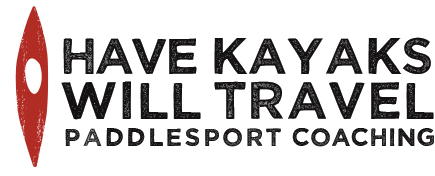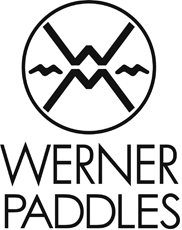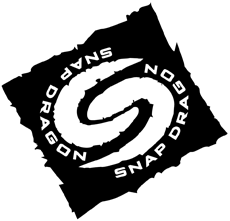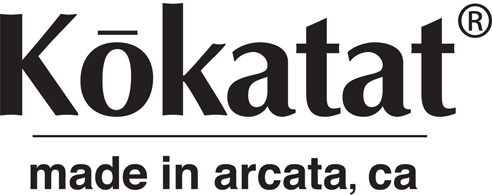It’s a basic tenet of safe paddling: Bring what you need to fix whatever goes wrong with your boat or your body, and know how to use it. Boat repair and first aid kits are permanent fixtures in our day hatches–essentials we’re happy to have and hope not to use. Our compact boat repair ( in waterproof Pelican box) and first aid kits. Before a longer trip, it’s especially important to reassess the contents of both kits. In preparation for our recent wilderness trip, we considered the things we were most likely to need and added several items to our standard kit: epipens (in case of anaphylaxis) prednisone (in case of severe allergic reactions) antibiotics (in case of infection) inhalers (in case of asthma). Our first aid kit with additions; we stored it in a dry bag. Wilderness Medical Associates offers a helpful guide to assembling a wilderness first aid kit. We suggesting buying a basic first aid kit and modifying it for your needs. In the end, you have to make choices about what and how much to bring. We also restocked our repair kits with additional materials for fixing leaks, holes, lost hatch covers and jammed skegs. Here, too, we made choices and left a spare skeg cable at home. We used the first aid kit twice (not including regular provision of ibuprofen–or “vitamin i,” as it’s commonly known). Both incidents happened on land, which isn’t surprising when you compare the risks during paddling (mostly repetitive stress injuries, which are unlikely if you have good technique, but possibly injuries caused by impact during a rescue) with the risks while carrying heavy boats, climbing on rocks, using knives and fire to prepare meals, and walking around in the dark. Sharon sustained the first injury during lunch about a week into the trip. Perched on a rock, holding her rescue knife (with which she had just sliced cheese–one of its main uses), she reached for a falling water bottle and cut deeply into one of her fingers. It bled profusely, which was great for ensuring it was clean, but it required bandaging to stay closed and heal without infection. We were happy to have antibiotic cream, waterproof bandages and nitrile gloves to protect it (not to mention Alec, who has both Wilderness First Responder and EMT certifications). For several days afterwards, Sharon was our “super villain,” complete with lavender glove. Sharon protecting her bandageded finger from infection (and pretending she lost half of it). Photo courtesy of John Fleming. Keith sustained the second injury on the final night of the trip. Walking in the dark on the beach, he kicked a log and split open one of his toes. Alec...
Paddling gear for trips: what worked well
Our recent trip along the coasts of Pukaskwa National Park and the Lake Superior Highlands was a great opportunity to test a variety of gear. In addition to our ongoing quest for a paddling shoe that fits, protects and lasts–the holy grail of kayaking, we’re convinced–we’ve been assessing the performance of clothing, camping equipment, camera bags and other accessories. On a wilderness trip, every piece of gear has to justify its weight and space in the hatches. We put our gear to the test over the course of a 120-mile wilderness trip. Here’s what we concluded. Clothing Kokatat’s Portage paddling booty. Paddling booties: We’ve been on a quest for a booty that fits as well as the NRS Sasquatch Water Shoe but has a more durable sole. (We’ve each gone through two pairs of the Sasquatch in one season.) Sharon is sold on the Kokatat Portage shoe, which is roomy enough in the toe bed, has a strong and grippy sole, and has a snug enough cuff to keep feet in and pebbles out. We like the Portage’s clean exterior (no loose cords to catch on foot pegs) and the internal lacing system that snugs up the boot. The sizing is unisex and only goes down to six. Ordinarily a women’s size six or seven, Sharon was pleased to find that the unisex six fit well with a pair of wool socks underneath, with or without the addition of Gore-tex drysuit booties. Oddly, the larger size didn’t appear to have a wider toe bed, and Alec found the shoe too tight. He is still wearing the NRS Desperado Shoe while he continues his search for the perfect paddling footwear. (Portage retail: $72) Morning yoga–or something like it–in paddling gear. Paddling clothing: We were confronted with the Lake Superior clothing conundrum. The air and water were unusually warm: daytime air temperatures were in the 70s, and the water was in the mid-60s. But there was potential for cooler, windy and rainy weather. Drysuits would be have been too warm, so the challenge was bringing the correct layers to cover the possible temperature range and keep us comfortable during long days on the water. On the warmest days, Alec wore his Kokatat Destination Paddling Shirt, which provides UPF 40+, and is quick drying and comfortable; Sharon wore a short-sleeved Immersion Research jacket, which is no longer produced. In cooler weather, both of us were dry and comfortable thanks to our Kokatat Gore-tex Paddling Jackets, which are still holding up after more than six year of serious use. Underneath, we wore short-sleeved wool or rash guard shirts to prevent chafing. Nearly every day, we both wore our Kokatat Surfskin pants, which have a thin, windproof rubber...
Why we chose to paddle Pukaskwa
Well, yeah, because it’s there, but there’s so much more to it than that. And yeah, because our good friend Keith Wikle suggested we paddle it together with him and John Fleming, but that isn’t the whole story, either. Alec and Keith strike a balance. We chose to paddle the coastline of Pukaskwa National Park and the Lake Superior Highlands in Ontario because it provides a glimpse of what the Great Lakes were like before industry and development altered them irrevocably. It’s truly remote: one road at Hattie Cove, another one at Michipicoten Harbor 120 miles later, and between them nothing but wilderness and pristine waters. This coastline requires complete self-sufficiency. Paddlers must bring everything they need and be able to solve problems that arise without assistance from others, because they are unlikely to find anyone else around. This shoreline is so remote, you’re unlikely to see another paddler for days at a stretch. A trip like this requires significant planning and preparation. That’s part of the attraction. You have to make a raft of good choices about everything from what boat you’ll paddle to what food you’ll bring, as well as how you’ll handle anything that goes wrong with equipment, the weather or the health of the group. Keith and Sharon on a windy day. We began by creating a Google Doc, where we shared information in the following categories: Expectations: distance per day, daily schedule, priorities. Logistics: shuttle, float plan, back country permits. Gear: from first aid and boat repair kits to stoves, water filters and bear bags. Emergencies: medical issues, medications, emergency contacts, extraction plan. Group sharing: medical conditions, phobias and insecurities (bears, snakes, hunger, baldness). Resources: maps, books, campsite info. Then we met in person to go over the list, discuss some of the items on it and ensure that we shared the key expectation for the trip: that it would be a somewhat leisurely exploration of the coastline, not a race to complete the mileage, and would include plenty of time for taking photos, poking into crevices, hiking to waterfalls and drinking whiskey around a campfire. Keith, John and Alec chill out around a campfire (one of our priorities). Individually, we spent time assembling our gear. We bought and dried food, marked and laminated maps, checked our boat repair and first aid kits, assembled camping equipment, and verified that we could fit all of it in our boats. Until the last minute, we were calling and texting each other with questions and suggestions; the trip was a group effort long before we got on the water together. Ultimately, that’s one of the main reasons why we chose to do this trip. Paddling requires a considerable...
Cross-training our paddling and coaching
Sharon interpreting daily marine forecasts during a wilderness trip. This has been an unusual summer for us. Ordinarily, we spend much of the season coaching locally and at symposia around the midwest. But this year, we opted to expand our horizons, literally and figuratively. Alec and Matt chart a course in the San Juan islands. We spent most of July in the San Juan islands, paddling in dynamic ocean currents and coaching for Body Boat Blade International; we spent the first two weeks of August on a wilderness trip along the northeast shore of Lake Superior. John, Sharon and Keith assess conditions on Lake Superior. Why vary the routine? Three reasons: Paddling with a variety of people in a variety of environments is a great way to gain both knowledge and experience. Coaching with a variety of people in a variety of environments is a great way to challenge our creativity and develop new approaches. Personal paddling complements coaching. It puts everything we teach into practice and reminds us of our goal for our students: enabling them to safely paddle independently. And besides, we’ve been longing to do more kayaking on the ocean and with friends! Leon and Alec play in a slot in the rocks. We’ll devote the next few posts to reflecting on some of what we learned this summer–ideas that have affected our coaching, our paddling, our trip planning or our...
Alta Kayak: another cottage paddling industry
We’re fascinated by businesses born of necessity. We’ve written in the past about Snapdragon and Werner, two of the many Pacific Northwest paddlesport companies begun by enthusiastic paddlers who needed gear that wasn’t readily available. But the truth is, most of today’s best-known kayak-related companies began as cottage industries–a phenomenon well portrayed in Kent Ford’s film, The Call of the River. Taking David up on the claim, “If you break it, Alta Kayak can fix it!” Yesterday, we dropped in on David Thompson, founder of Alta Kayak, a custom outfitting company on Orcas Island. We brought a boat for him to repair (“If you break it, Alta Kayak can fix it!” his website promises) and hung around to look at his current projects. David’s one-room shop. David bills himself as a designer and craftsman–talents that predate his work on human-powered crafts. He began working with his hands at the age of 14, helping his grandfather do stonemasonry. He did bodywork on airplanes in the armed services, then worked in boiler repair and construction. Six years ago, while living in Montana, he decided to apply his skills at building and repairing things to kayaks; four years later, he moved to Orcas, which offered the perfect combination of paddling opportunities and performance sea kayakers — the kind of people who really care about customizing their boats. David Thompson in his shop. Today he specializes in custom seats to replace the ones that come from the factory. He creates some of them to solve specific problems, such as lower back pain, tailbone pressure or leg cramps; some to suit specific preferences for seats of a particular height, width or shape; and some for performance paddlers who prefer a composite seat to a plastic or foam one. Each seat is made to order, built by hand for a specific person and boat. One of David’s hand-built molds for a kayak seat. People learn about his seats mostly through word of mouth or by seeing them in other people’s boats. If they can come to Orcas, they can buy a custom fiberglass seat for $150, or a carbon fiber seat for $200, and David will install it for $50. If coming here isn’t an option, he can ship the seat and all the parts required for installation. Rolls of carbon fiber, fiberglass and other material. One of David’s recent innovations is a carbon-fiber paddle holder that’s bolted to the deck ($200 plus $50 for installation). And he’s working on a deck compass light that doesn’t interfere with night vision. David’s paddle holders are sleek and secure. Between projects, David still performs a fair number of boat repairs and keel strip installations. The best part...
Great Lakes skills meet ocean conditions
Seth and Sharon in a tidal race in the San Juan Channel. Paddling on the Great Lakes can be challenging at times. Strong winds generate large, steep waves; hard break walls produce chaotic clapotis. But we don’t have tides, so many ocean features are less familiar to us: massive eddy lines, whirlpools, overfalls, and the complications of navigating in current. Current creates fun features on the ocean. We’ve enjoyed seeking out challenging water on the Great Lakes as well as on rivers, and we’ve trusted that the skills we’ve developed would translate well to the ocean environment. But there was only one way to be sure: get out to the coast and paddle. Alec prepares to “speed launch” off a barnacle-encrusted rock. It works as well here as anywhere. Over the past two weeks, we’ve practiced doing self and assisted rescues in strong current, rolling in whirlpools, maneuvering around rocks and ledges, extracting swimmers from craggy slots, and surfing in tide races. Leon and Alec control their boats in a slot. Dynamic water definitely puts skills to the test. As we tell our students, everything we do — from strokes to rescues — has to be executed in a manner that will work as well in wind, waves and current as it does on flat water because we need them most in more complex conditions. Pool-proof rolls and sloppy rescues are of no use in Deception Pass. Let go of a boat or a paddle, and it will be swept away. Every skill needs to work when conditions are exciting or it is of no use. Except, of course, standing on your boat. (At least for now.) Sharon demonstrates an essential flat-water...
Preparing for a trip: Paddling!
We spent several weeks assembling all the gear and supplies we’ll need for our upcoming trip along the shoreline of Pukaskwa National Park and Superior Highlands in Canada. But all the planning and preparation would be for naught if we didn’t also get out and paddle. We’re doing just that this month in the San Juan Islands in Washington state, where we’re coaching some courses for Body Boat Blade International and paddling in this beautiful, dynamic location. Alec paddling on a calm and clear day. OK, so being here isn’t solely trip preparation. It’s actually an opportunity for us, as Great Lakes paddlers, to develop our knowledge of tides and currents and how they affect trip planning and ocean features, to work on our navigation skills, and to learn from Shawna Franklin and Leon Somme, two of our coaching mentors. Shawna, demonstrating a yoga pose atop a kayak. Leon, “speed launching” surf-style. Being here is not particularly conducive to blogging, however. Our only access to the internet is at the shop, which isn’t where we’re spending most of our time. Rather, we’re out on the water as often as possible. We began our time here assisting with a five-day kayak camp, a “learning vacation” for paddlers with some prior experience that covers paddling technique, rescues, rolling, tides and currents, navigation and risk assessment. A couple of mornings were spent in the shop working on navigation, tides and currents… …or on the beach, learning about weather systems…. …before heading out on the water to work on strokes, maneuvers and rescues. The course culminates in an overnight trip that participants plan and execute, complete with a cookout and a night paddle in the bioluminescent plankton Noctiluca scintillans. Loading up before heading out. (Hey, this counts as trip preparation!) Sunset at Sucia Island, where we spent the night. The goal of the course is to provide participants with the core skills they need to safely embark on their own trips. As with all courses at Body Boat Blade, the aim is to create independent paddlers. Judging by the paddling these participants set off to do after the class ended, and the thoughtful way they approached their plans, the five-day camp attained this objective. Alec gets a...
Preparing for a kayak trip: Shelter, part one
We’ve become fans of wing-shaped tarps for kayak and camping trips. They offer protection if you have to set up a tent in the rain, a covered but ventilated place for cooking, and an option outside the tent if you’re stuck on land waiting for a storm to pass. Awing tarp requires fewer poles than a square tarp, sheds water efficiently and holds up well in the wind. We’ve been impressed by the MSR Zing when we’ve seen it used with large groups, but at nearly seven pounds and 28 by 6 inches (packed), and a price tag of $400, that’s more than we need for a four-person trip. So we were pleased to meet its kid sister, the Twing. Smaller (8 by 6 inches) and lighter (2 1/4 pounds), it can be pitched with support from spare paddles and provide the kind of protection we need. Hannah under the Twing. Back in its bag, the Twing is small and light. And as with all equipment for a trip, it’s a good idea to practice using it before it’s actually needed. We found the Twing quick and easy to set up, take down and repack. Adding additional guylines made it exceptionally sturdy. This one’s a keeper. We’re looking forward to using it in August–or better yet, finding we don’t need it because the weather is glorious the entire time we’re gone....
Preparing for a kayak trip: Food, part one
We’ve begun collecting and preparing food and gear for a 12-day trip this August along the Pukaskwa coast and Superior Highlands–a journey of about 120 miles as the crow flies, but longer if you hug the shoreline and explore coves and islands. We’re planning to take the trip slowly, documenting the area and enjoying detours on land and on water. We don’t want to bring anything along that we haven’t tested. So we’ve been dehydrating food and tasting it; outfitting boats and paddling them; and favoring tried-and-true gear over unfamiliar items. That said, this trip calls for some things we’ve never needed before. So over the course of the next month or so, we’ll blog about what we’ve learned. As we planned our menu, we realized we needed some kind of milk to go on breakfast dishes. (Our breakfast menu rotates between steel-cut oats, quick-cooking quinoa, and muesli.) It would be possible to do without milk, but we’ll be far happier in the morning’s with it. We aren’t fans of dried cow’s milk, so we prowled around online for a soy milk that gets good consumer reviews. We settled on Better Than Milk Soy and ordered two canisters that make eight quarts apiece. This tofu-based dried soy milk calls for 2 Tbsp. of powder for each cup of water. We tested it this morning. It’s tasty and has enough body to hold up on cereal and in cocoa and coffee. This one is coming along. Alec tests the reconstituted milk on breakfast cereal. We’ve already made a few batches of tofu jerky, based on a recipe shared with us by Sue Gjerset of Minnesota, who has participated in courses each of us has taught. It’s phenomenal–a great, high-protein snack and lunch item–and we plan to make several more batches before we leave. TOFY JERKY 1/2 cup low-sodium soy sauce 3 to 4 tbsp liquid smoke 1/8 cup water 1 tbsp onion powder 1 tsp garlic powder or 1 clove crushed fresh garlic 1 tbsp fresh ground black pepper 1 tsp honey 1 pound extra firm tofu Drain and pat dry the tofu. Take the cube, cut it in half, and then slice it into strips on its short side about ¼ inch in thickness. Mix all the marinade ingredients together well. Put the tofu in a single layer in a shallow baking pan or cookie sheet and pour the marinade over it. Let soak for several hours or overnight. Drain excess liquid and dry tofuin food dehydrator or warm (200 degrees F) oven. This will take 4 to 8 hours, depending on weather. Dry the jerkyuntil it is very chewy, but not crispy. Be creative: Use Tabasco or ground...
Wilderness First Responder course completed
Every year, we start our paddling season by doing some training or an assessment. We do this in order to stay current as coaches and prepare ourselves for whatever might arise with students. The dining hall at Camp Kandalore, where painted paddles represent campers who’ve completed a 30-day canoe trip. Alec just returned from Camp Kandalore in Ontario, where he completed completed the WAFA to WFR Bridge course to complete his Wilderness First Responder (WFR) certification. The training was provided by Matt Howell of Wilderness Medical Associates, Director of Missinaibi Headwaters Outfitters, an adventure touring company in Chapleau, Ontario. Matt Howell demonstrates methods of reducing a dislocated shoulder in the field. Obtaining a WFR certification is required for most backcountry guides, and it’s invaluable for anyone venturing into the wilderness for an extended trip. It focuses on how to assess and care for patients suffering from a wide range of medical and trauma issues in remote places where emergency services may be days or weeks away. A litter made of canoe paddles, rope, camping gear and other available materials, designed to keep the patient’s spine stable during an extraction over rough terrain. As we posted when Alec took the Advanced Wilderness First Aid course last fall, the curriculum covers risk management and prevention as well as assessment and management/treatment. It does so through readings, discussions and plenty of scenarios. The Bridge course builds on the body of knowledge in the WAFA course and qualifies participants to treat a greater range of conditions. A gruesome wound, artfully created with stage makeup, gravel and twigs. It also emphasizes the risk/benefit considerations in every decision. For us, this is familiar territory. As paddlers and coaches, we are constantly assessing risks and rewards. Will running a particular drop be rewarding enough to be worth the risk? How great is that risk? And how serious are the consequences? And in rescues, we ask whether coming to the aid of one person puts others at risk. In wilderness medicine, rewarding is measured in terms of the patient’s health. Will moving him increase his comfort or heighten the chance of injury to the patient, the rescuer and the group? Is the risk associated with administering pain medication worth the relief it provides? Infant CPR is part of the WFR remit. Wilderness Medical Associates calls the Wilderness First Responder course “the definitive wilderness course in medical training, leadership, and critical thinking for outdoor, low-resource, and remote professionals and leaders.”As we’ve seen over the six years that we’ve participated in WMA courses, they are constantly updating the curriculum to reflect new research and current best practices. The courses are rigorous and the knowledge essential. We’ve already put what we’ve learned into...







